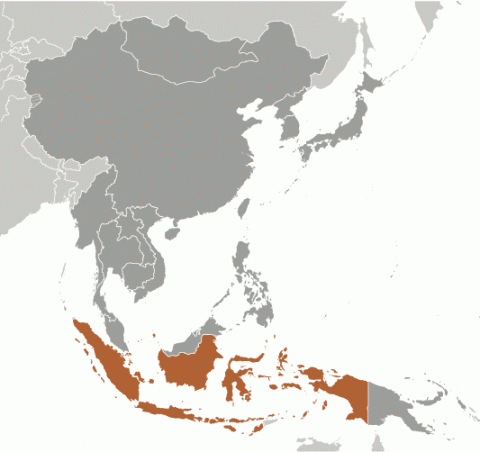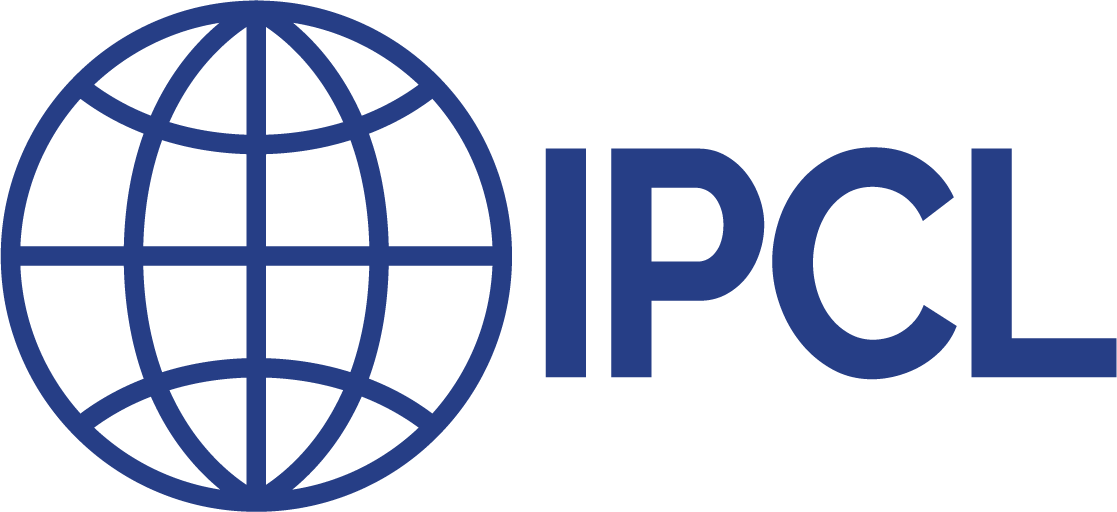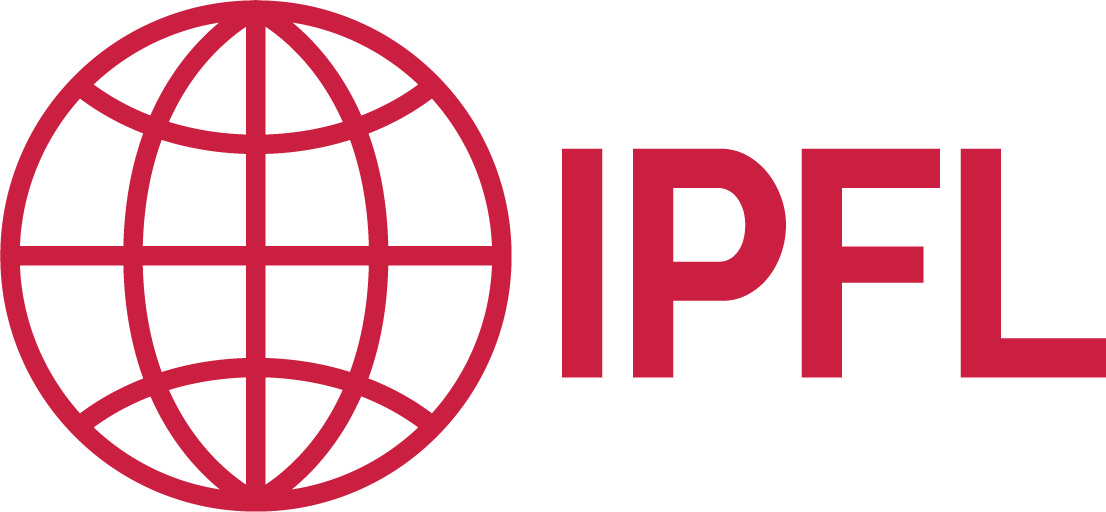Child Labor and Forced Labor Reports
Indonesia


Moderate Advancement
In 2024, Indonesia made moderate advancement in eliminating the worst forms of child labor. Two government agencies, the Child Protection Commission and the Financial Transaction Reports and Analysis Center, signed a memorandum of understanding to coordinate closely on financially tracking crimes related to the online commercial sexual exploitation of children—a major driver of exploitation of Indonesian children. Furthermore, the National Police established a new Crimes Against Women and Children and Human Trafficking Directorate to better address violence against women and children, including child trafficking crimes. Lastly, during the reporting period the government established a child labor liaison coordination team within the MOWECP to work with the Ministries of Manpower, Education, and Social Affairs. However, the Ministry of Manpower continued to lack the financial resources and personnel necessary to fully enforce child labor laws throughout the country. In addition, Indonesia's prohibitions against child trafficking are inconsistent with international standards because the Law on the Eradication of the Criminal Act of Trafficking in Persons requires that the use of threats, force, or coercion be established for the crime of child trafficking to have occurred. Finally, Indonesian law is not consistent with international law as the National Education System Act allows students to be charged fees for education.
| Children | Age | Percent and Population |
|---|---|---|
| Working | 10 to 14 | 3.7% (816,363) |
| Hazardous Work by Children | 15 to 17 | Unavailable |
| Attending School | 10 to 14 | 92.4% |
| Combining Work and School | 10 to 14 | 2.1% |
| Sector/Industry | Percent of Population |
|---|---|
| Agriculture | 61.6% |
| Industry | 12.0% |
| Services | 26.5% |
| Sector/Industry | Activity |
|---|---|
| Agriculture | Production of palm fruit, including by applying fertilizers,† spraying pesticides,† and harvesting and loading fruits.† Planting, watering, harvesting, and applying fertilizer† to tobacco, and curing, tying, and carrying tobacco leaves into storage units in the post-harvesting phase.† Producing rubber.† Working in the fishing sector, including on fishing vessels,† in processing facilities, and on offshore platforms.† |
| Industry | Construction.† Producing footwear. Mining,† including the mining of gold and tin. |
| Services | Domestic work. Horse jockeying. Street work, including working as sidewalk food vendors, begging, and street performing. |
| Categorical Worst Forms of Child Labor‡ | Commercial sexual exploitation, sometimes as a result of human trafficking. Forced domestic work, fishing, and mining. Use in illicit activities, including the sale, production, and trafficking of drugs. |
† Determined by national law or regulation as hazardous and, as such, relevant to Article 3(d) of ILO C. 182.
‡ Child labor understood as the worst forms of child labor per se under Article 3(a)–(c) of ILO C. 182.
Children at Higher Risk
Research indicates that children in Indonesia are especially vulnerable to child labor, including in commercial sexual exploitation and in offshore fishing, mining, domestic work, construction, and in the sale and transportation of illicit drugs. Rohingya children fleeing violence and oppression in Burma and poor conditions in the refugee camps of Bangladesh are also at risk of child labor in these sectors. Furthermore, Indonesian citizens are being increasingly displaced internally due to natural disasters and conflict, and displaced children are at increased risk for child labor in the aforementioned sectors. Indonesian children who attend vocational schools are particularly vulnerable to child labor, as reports indicate that the vocational school internship program is increasingly used to exploit children in situations of hazardous child labor, rather than providing an educational opportunity as intended.
Barriers to Education Access
Although the National Education System Act mandates free education, the law also permits schools to impose additional fees on students to cover items such as books, uniforms, transportation, and other non-tuition costs, which may hinder the ability of students, particularly those from low-income families, to attend school. Refugee children and Indonesian children without proper birth documentation or government-sponsored identification cards also face barriers to accessing education, because Indonesia's formal education system is only accessible to citizens and individuals who have been officially granted residency. Children in the conflict-affected areas of Indonesia's Papua region experience significant barriers to education due to the use of soldiers as teachers and an overall lack of teachers. In addition, children with disabilities reportedly have higher rates of non-registration due to stigma and poverty.
| Standard | Age | Meets International Standards | Legislation |
|---|---|---|---|
| Minimum Age for Work | 15 | ✓ | Law on the Ratification of ILO C. 138; Article 69 of the Manpower Act |
| Minimum Age for Hazardous Work | 18 | ✓ | Article 74 of the Manpower Act; Article 2 of Ministerial Decree on Jobs that Jeopardize the Health, Safety, or Morals of Children |
| Identification of Hazardous Occupations or Activities Prohibited for Children | ✓ | Annex F of Ministerial Decree on Jobs that Jeopardize the Health, Safety, or Morals of Children | |
| Prohibition of Slavery, Debt Bondage, and Forced Labor | ✓ | Articles 74 and 183 of the Manpower Act; Articles 1–6 and 17 of the Law on the Eradication of the Criminal Act of Trafficking in Persons; Article 83 of the Law on Child Protection | |
| Prohibition of Child Trafficking | ✗ | Articles 1–6 and 17 of the Law on the Eradication of the Criminal Act of Trafficking in Persons; Article 83 of the Law on Child Protection | |
| Prohibition of Commercial Sexual Exploitation of Children | ✓ | Articles 74 and 183 of the Manpower Act; Articles 81 and 82 of the Law on Child Protection; Section 3 of the Law on the Ratification of the Rights of the Child Optional Protocol on the Sale of Children, Child Prostitution, and Child Pornography; Articles 4–12 and 37 of the Law on Anti-Pornography; Articles 293 and 297 of the Penal Code | |
| Prohibition of Using Children in Illicit Activities | ✓ | Articles 74 and 183 of the Manpower Act; Articles 67, 78, and 89 of the Law on Child Protection | |
| Minimum Age for Voluntary State Military Recruitment | ✓ | Article 28 of Law on the Indonesian National Armed Forces | |
| Prohibition of Compulsory Recruitment of Children by (State) Military | ✓ | Article 28 of Law on the Indonesian National Armed Forces | |
| Prohibition of Military Recruitment by Non-state Armed Groups | ✓ | Article 3(d) of Law on the Ratification of the Optional Protocol to the Convention on the Rights of the Child on the Involvement of Children in Armed Conflict | |
| Compulsory Education Age | 15 | ✓ | Article 48 of the Law on Child Protection; Articles 6 and 34 of the National Education System Act |
| Free Public Education | ✗ | Articles 12(2)(b) and 34 of the National Education System Act |
Indonesia's prohibitions against child trafficking are inconsistent with international law because the Law on the Eradication of the Criminal Act of Trafficking in Persons requires that the use of threats, force, or coercion be established for the crime of child trafficking to have occurred, which is inconsistent with international law. Although Indonesian law does specify the conditions under which light work may be undertaken and limits the number of hours for light work, it does not list the activities that constitute light work. Furthermore, horse jockeying, which has been documented as physically dangerous to children, is not included on the list of hazardous work prohibited for children. In addition, although the National Education System Act provides for free basic education, Article 12, Section 2(b) of the Act also requires students to pay fees unless those fees are waived. Also, free, compulsory education is only guaranteed for citizens and individuals who have been officially granted residency. The failure to provide for completely free basic education for all children may increase the risk of children's involvement in the worst forms of child labor.
| Organization/Agency | Role & Activities |
|---|
| Ministry of Manpower: Through the Directorate General of Labor Inspection and Occupational Safety and Health, enforces the country's labor laws relating to child labor through labor inspections and formulates and implements policies, norms, standards, guidelines, and mechanisms related to labor inspections. During the reporting period, the Ministry reportedly conducted joint labor inspections with the Ministry of Marine Affairs and Fisheries. Reports indicate that limited financial and human resources inhibit the inspectorate's ability to monitor child labor effectively across the country. |
| Indonesian National Police: Handle investigations involving child trafficking. Conduct inspections and raids, and make arrests in response to crimes, including those related to the worst forms of child labor. Maintain an informal database of cases involving child trafficking. However, the government lacks a centralized system for aggregating information on its criminal law enforcement efforts. The decentralized nature of criminal law enforcement data and voluntary system of reporting by precincts contributed to incomplete criminal law enforcement information related to the worst forms of child labor. During the reporting period, a new directorate—the Crimes Against Women and Children and Human Trafficking Directorate—was established under the Indonesia National Police's Criminal Investigation Department to strengthen efforts to address cases of violence against women and children, including cases of child trafficking. |
| Overview of Enforcement Efforts | 2024 |
|---|---|
| Has a Labor Inspectorate | Yes |
| Able to Assess Civil Penalties | No |
| Routinely Conducted Worksite Inspections | Yes |
| Unannounced Inspections Permitted | Yes |
| Has a Complaint Mechanism | Yes |
| Imposed Penalties for Child Labor Violations | Unknown |
| Conducted Criminal Investigations for Worst Forms of Child Labor Crimes | Unknown |
| Imposed Penalties for Worst Forms of Child Labor Crimes | Unknown |
In 2024, 1,467 inspectors conducted an unknown number of worksite inspections, finding an unknown number of child labor violations. It is also unknown whether investigations into suspected cases of the worst forms of child labor were conducted, prosecutions were initiated, or perpetrators were convicted.
| Coordinating Body | Role & Activities |
|---|
| Indonesian Child Protection Commission: Monitors the implementation of the Child Protection Law and child protection policies and provides recommendations on child protection to the President of Indonesia. Continues to engage and coordinate with the Ministry of Women Empowerment and Child Protection; the Ministry of Social Affairs; the Ministry of Education, Culture, Research, and Technology; the Ministry of Health; the Ministry of Agriculture; the Ministry of Primary and Secondary Education; the Ministry of Higher Education, Science, and Technology; the Ministry of Culture; the Ministry of Law; the Ministry of Human Rights; the Indonesian National Police; and the National Narcotics Agency. In 2024, following the discovery of transactions totaling $7.8 million tied to child prostitution-related money laundering crimes, the Indonesian Child Protection Commission signed a memorandum of understanding with the Financial Transaction Reports and Analysis Center to coordinate more closely on preventing and addressing the online commercial sexual exploitation of children. |
| Policy | Description & Activities |
|---|
| Roadmap for a Child Labor Free Indonesia (Phase II):* Launched during the reporting period by the Ministry of Manpower. Supports the implementation of the National Plan of Action for the Elimination of the Worst Forms of Child Labor. Aims to mainstream the elimination of the worst forms of child labor into relevant national policies; strengthen coordination between stakeholders at the national, provincial, and district levels; and enhance the capacity of stakeholders to eradicate child labor. The government has not yet passed a National Plan of Action to implement Phase II of the Roadmap. |
| National Action Plan for the Prevention and Handling of Trafficking in Persons: Adopted in 2023 and aims to prevent and address human trafficking, including the trafficking of children, by working through the Central Task Force, Provincial Task Force, and District/City Task Force. During the reporting period, the government took steps to implement the National Action Plan, though specific actions were not reported. |
* Policy was approved during the reporting period.
‡ The government had other policies that may have addressed child labor issues or had an impact on child labor.
| Program | Description & Activities |
|---|
| Cash Transfer Programs:‡ Government of Indonesia-funded conditional cash transfers to help with formal and informal education opportunities and health expenses for vulnerable groups, including children who experience homelessness, abandoned children and infants, children facing criminal charges, children with disabilities, and child laborers who have dropped out of school. Includes the Healthy Indonesia Card (Kartu Indonesia Sehat), which serves 100 million Indonesians who are struggling to meet basic needs, thereby reducing their risk of child labor; the Smart Indonesia Program (Kartu Indonesia Pintar), a card that provides educational grants to all school-age children whose families have a Family Welfare Card or meet eligibility criteria covering both formal and informal education; the Child Social Welfare Program (Program Kesejahteraan Sosial Anak), which provides conditional cash transfers to children; the Family Welfare Card (Kartu Keluarga Sejahtera), which provides a bank account and consolidates all financial assistance programs, including children's education and health funds, for low-income families; and the Family Hope Program (Program Keluarga Harapan), which provides conditional cash transfers for children's education to the poorest 5 percent of households. During the reporting period, the Government of Indonesia provided educational grants to 18.6 million students from poor families through its cash transfer programs. |
| Education Programs:‡ The School Operation Assistance (Bantuan Operasional Sekolah) grant program compensates schools for the loss of income from waiving school fees for poor and vulnerable children in primary, junior secondary, and senior high schools. Funding was allocated to schools under this program during the reporting period. The Minimum Service Standards of Basic Education Program improves access to quality public education by limiting the distance of primary and junior secondary schools from children’s households, specifying minimum teacher-student ratios, and identifying minimum teacher education qualifications. Community Learning Centers provide education for children of palm oil workers. It is unclear whether actions were undertaken to implement the Minimum Service Standards of Basic Education Program or the Community Learning Centers during the reporting period. |
‡ Program is funded by the Government of Indonesia.
† The government had other social programs that may have included the goal of eliminating or preventing child labor.
| Area | Suggested Action |
|---|---|
| Legal Framework | Ensure that threats, the use of force, and coercion do not need to be established for the crime of child trafficking to be proven. |
| Include in the list of hazardous occupations and activities prohibited for children all sectors in which child labor is known to occur, including jockeying in horse racing. | |
| Specify in the labor law’s light work provisions the activities in which light work may be permitted for children. | |
| Establish by law free basic public education by removing provisions that permit schools to charge fees and ensure that free basic public education is provided to all students, regardless of citizenship or residence status. | |
| Provide guidance and sufficient funding to support local governments in adopting regional action plans and implementing regulations for laws aimed at addressing and preventing the worst forms of child labor, including the Child Protection Law. | |
| Enforcement | Ensure that labor inspectorate funding is sufficient to cover office infrastructure, transportation, and fuel requirements to enable labor inspectors to carry out inspections. |
| Publish data on labor law enforcement efforts to address child labor, including the number of worksite inspections conducted, violations identified, and penalties imposed. | |
| Increase the number of labor inspectors from 1,467 to 9,423 to provide adequate coverage of the labor force of approximately 141.4 million people. | |
| Ensure that labor law enforcement officials have a mechanism to assess civil penalties. | |
| Strengthen the labor inspection system by conducting more unannounced inspections, conducting routine inspections that are targeted toward sectors in which child labor is known to occur, and authorizing labor inspectors to conduct inspections in the informal sector, including on private farms and in homes. | |
| Provide all criminal law enforcement personnel with adequate training on child labor regulations and relevant criminal laws. | |
| Publish data on criminal law enforcement efforts to address child labor, including the number of criminal investigations, prosecutions, and convictions related to the worst forms of child labor. | |
| Sufficiently fund the anti-trafficking task forces at the national, provincial, and local levels to conduct investigations and carry out their intended mandates. | |
| Provide resources for the collection and centralization of national data on child labor, mandate reporting by precincts, and specify which child labor crimes are referenced in the collected data. | |
| Government Policies | Adopt a policy that addresses all forms of child labor occurring in Indonesia, including children working in agriculture, industry, and services. |
| Social Programs | Conduct a nationally representative child labor survey using established quantitative methodologies used by UN organizations and international and local NGOs to better understand children engaged in child labor and its worst forms; and ensure the research includes information on child laborers between the ages of 5 and 10. Use the research findings to inform enforcement, policy, and social program initiatives. |
| Develop and implement social programs to address and prevent child labor in offshore fishing, mining, domestic work, construction, the sale and transportation of illicit drugs, and commercial sexual exploitation. | |
| Remove educational barriers and make education accessible for all children by taking measures to remove school fees, expanding birth registration for refugees and Indonesian children without proper birth documentation, removing military personnel in some parts of Indonesia's Papua region, and increasing resources for students with disabilities. | |
| Publicly report results of the Minimum Service Standards of Basic Education Program and the Community Learning Centers. | |
| Take necessary actions, including through the enhanced enforcement or strengthening of programmatic rules and guidance, to prevent the exploitation of children in hazardous work through the vocational school internship program. |

















